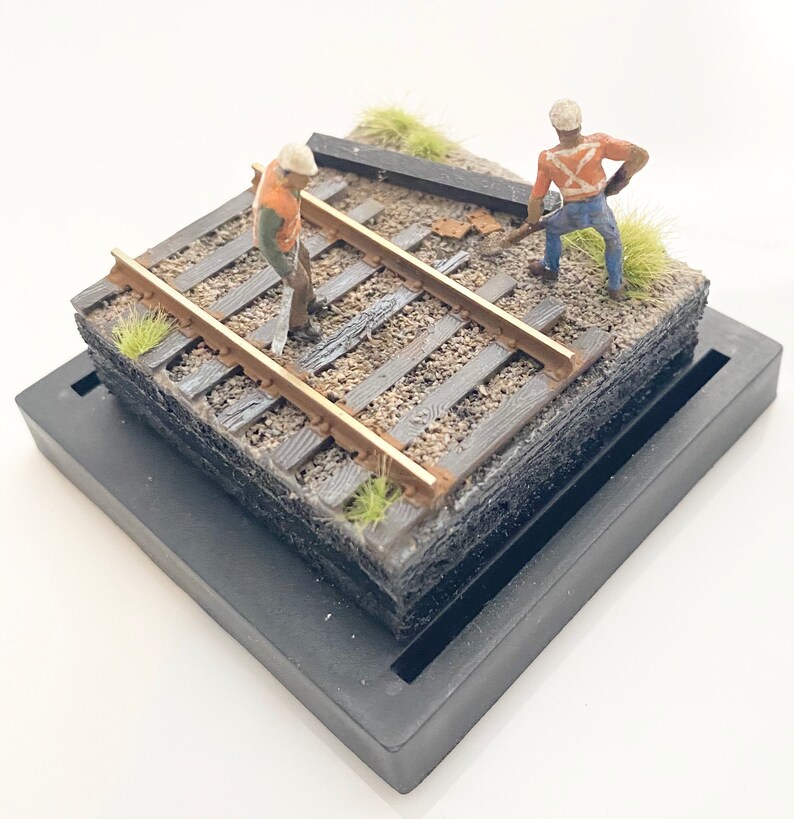It is time again to look back at the accomplishments of this year and peer into the murky future with hope. One of the perks of keeping a blog is the ability to scan through the year's doings, at least those recorded on these pages, and recount them. My first inclination is to say "well, I didn't get much done...ho hum...better luck next time around..." but that's not true. It is only the pallor cast by the misery of the previous nine months that makes me feel that way. There's plenty of light amidst the dark days.
In the last twelve months, despite the difficulties of current circumstances, I:
- restored the "Rimrock Pine and Western" diesel, hopper and caboose for my Christmas Tree Train
- gathered parts for a trio of Purina ventilated refrigerator cars
- continued work on the pair of cabeese for my Ocali Creek Railway
- tuned the trackwork for trouble-free operation on the railroad
- simulated mainline operations on my branchline pike
- made castings with Oyumaru and Miliput
- scratchbuilt a Fruit Juice stand from a historic photograph
- painted figures and a slew of details
- added and painted a fascia frame around the benchwork
- built a static grass applicator
- built the "Power Plank" for the railroad's throttles
- finished the Ocala Springs station using Sequoia Models' Fallberg Station kit
- built a Woodland Scenics Diamond T Flatbed kit
- painted more people and parts
- painted color tabs for all my craft paint bottles
- and puttered about on a smattering of odd tasks and small projects
In the last month I set for myself a challenge to finish the final details on my 2-6-0, finish the OCRy cabeese and rebuild a pair of Comet freezers. I'll follow up on that challenge in its own post, but suffice it to say they're coming along well.
I also wrote a few philosophical posts. This has been a difficult year, especially as an introvert with a family at home all the time. However, since writing that post back in June I'm happy to say we've developed some strategies for giving me uninterrupted down time to recharge (which is not always modeling time).
In last year's revisions I resolved to avoid spending my hard earned hobby dollars on needless purchases. That was far from successful. We are fortunate to have income streams that support our family's needs - food, shelter, clothing, savings, etc. - and a little leftover for hobbies. I found a few things this year I never knew I needed, but I also invested time organizing what I already have. I still resolve to better target my spending and overall spend less on my hobby.
Looking ahead to 2021, there are a few specific goals I wish to meet. While my garage is surprisingly less dusty that I'd thought it would be, the railroad still needs a cover. After my failed attempt this year I came up with an overly ambitious plan to cover the railroad with a lid. That's still the plan, but I've simplified the lid concept greatly (no more winch and integrated lighting) and stacked its functions to double as a gaming table.
That last point brings me to another goal. One of my unexpected purchases this year was actually prompted by my loving spouse. She gave me a gift token to our local gaming store. They sell all kinds of board games, Magic cards and tabletop wargaming miniatures. I brought home the Star Wars Legion core set. Yep. Vader, Skywalker, Rebels and Stormtroopers. This is one reason - a big reason - why I have been upping my painting game this year. Of course the pandemic has made such in-person gaming with non-family folks impossible for now, but when we're all able to get down to the Sword N Board again for paint nights I'll be there.
And, covering the railroad is also a prerequisite step for scenery work. This year I mentioned making little scenic cameos as a means to test various techniques and materials and I will be doing just that. The Ocala Springs station (and matching outhouse) is complete and ready to install once the foundations can be laid. Hopefully by the end of 2021 not only will the station be in place, but also a few streets and additional structures.
To close this post I wish you all, dear readers, a happy and healthy New Year! Thank you for reading, commenting, and joining me on this hobby journey. I appreciate your interest and hope to share much more with you in the coming days.

















































